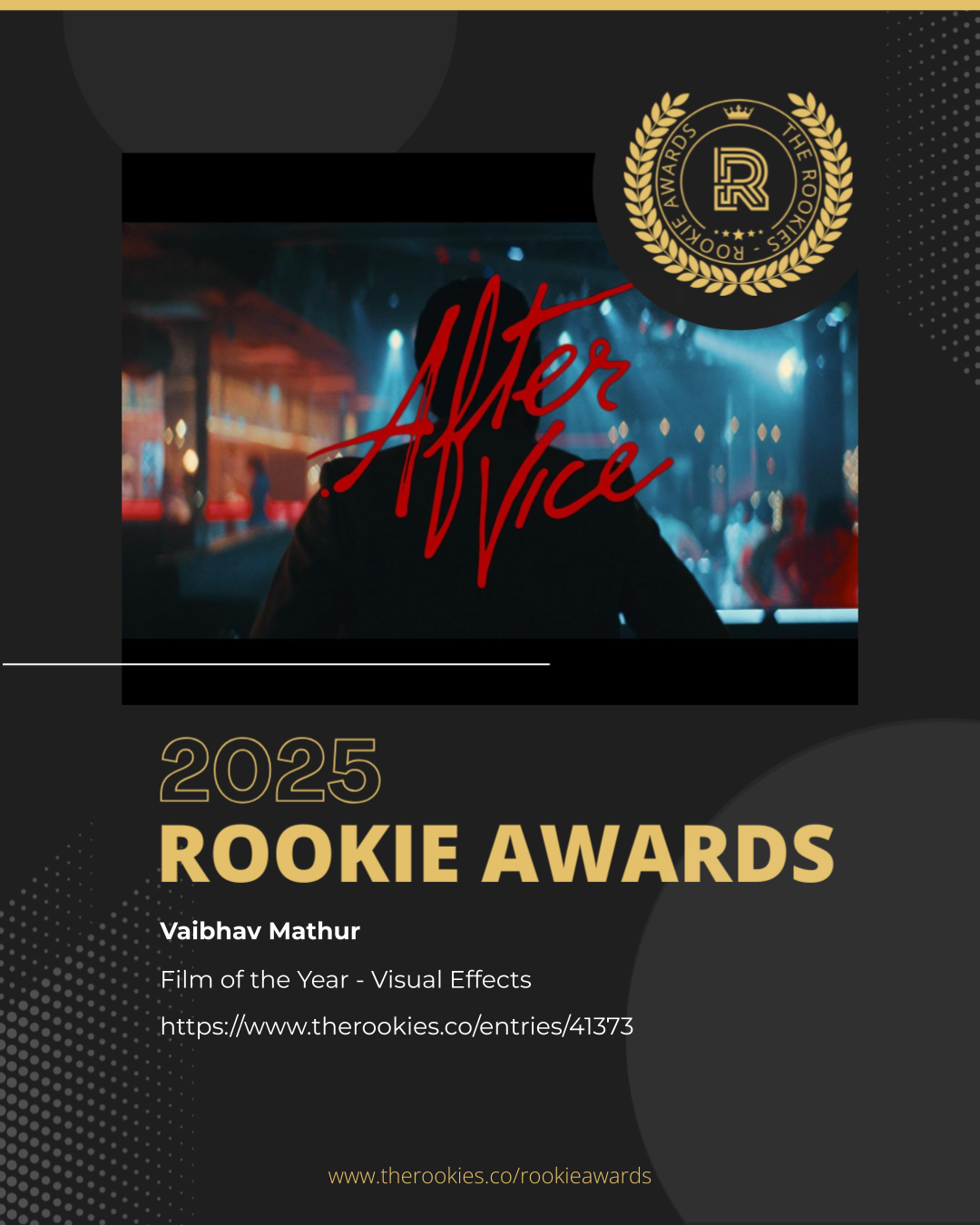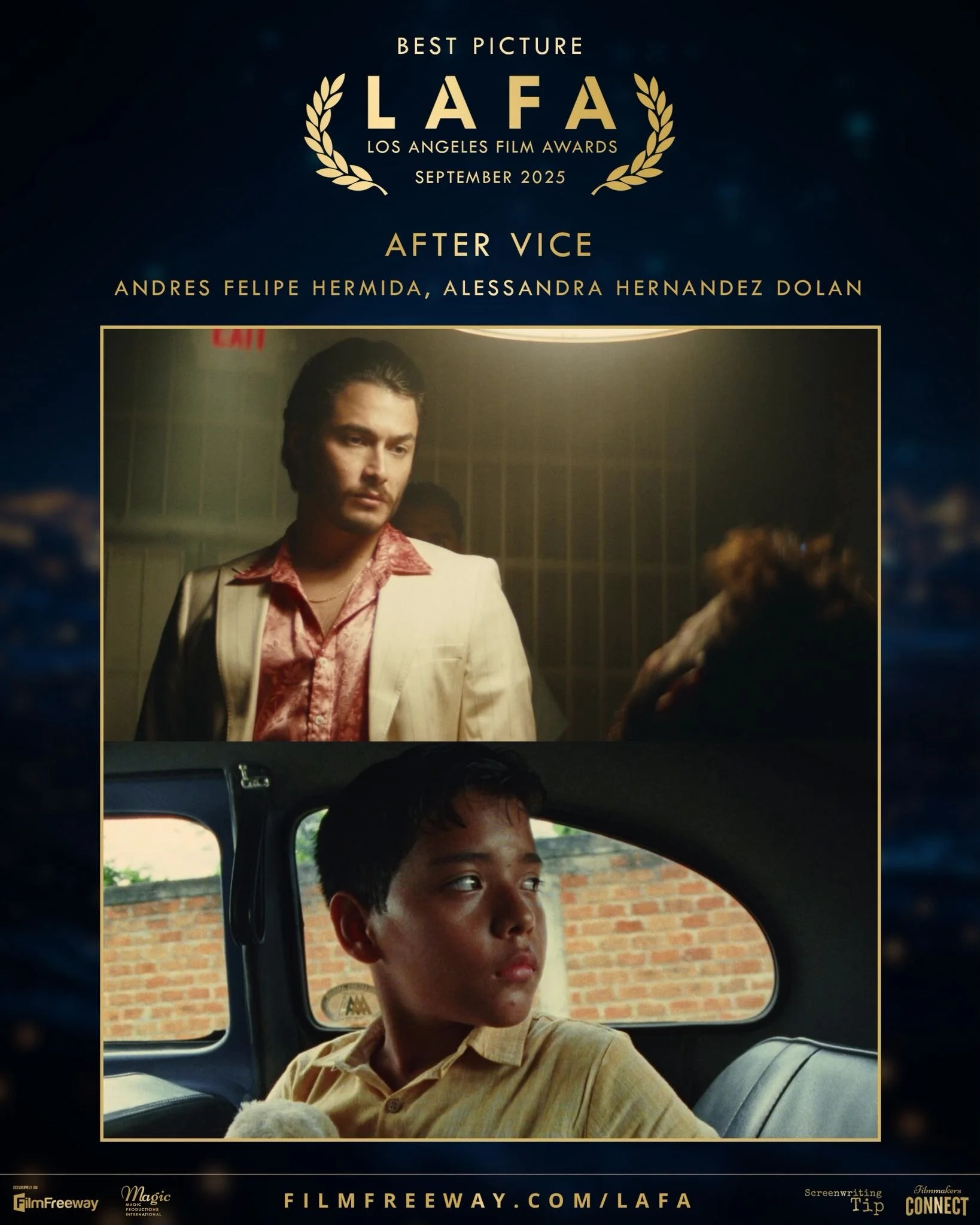
AFTER VICE
vIRTUAL PRODUCTION CASE STUDY
INTRODUCTION
“AfterVice is a gripping crime drama setting 1980sMiamithat explores the haunting cycle of generational trauma. Alejandro, once a frightened boy abandoned by his drug-addicted mother, has grown into a powerful yet emotionally scarred crime boss. His Mother's broken promises of being better have left deep scars, and now, as an adult, Alejandro unknowingly repeats the same cycle with his own son.
Instead of using drugs, Alejandro deals them, but the damage remains.When betrayal from a close associate puts Alejandro on the run, he makes one last promise to his family that things will change. In a final showdown with the police at an airstrip,Alejandro's life comes to a violent end, leaving his son to inherit a legacy of broken promises. The film explores how the failure to break free from the past affects not just individuals, but entire generations.”
- Andres Hermida and Alessandra Hernandez Dolan
PREPRODUCTION
2.1 Concept and Requirements
When Andres approached me to work as a virtual production artist on the film I was made aware that most of the shots that were to be worked on the XR Stage [Unit 3: XR] were car chase scenes and the requirement was moving cities and ocean drive from Miami. The timeline on the project was two weeks to create the environment and two load tests before the final shoot day.
2.2 Planning Solution
Me and my team came up with multiple creative solutions and approaches for the environment, and we chose the one that required the least amount of time. We started our project by inspecting the real life environment on google earth trying to understand the infrastructure of downtown Miami. Me and most of the team already had been to downtown Miami so we had some trained eyes on the job.
Eliezer Garcia Gazaui, our project lead, came up with several Miami Asset Packs. I went through these asset packs reviews and documentation to figure which ones matched our requirements. One of the biggest issues we faced was that the LED Volume stage had recently updated to Unreal Engine 5.4 which caused migration issues with almost all the asset packs on fab. We found two environments that matched our use case, one for an average downtown environment and one for ocean drive Miami.
Eliezer spent his time setting up blueprints of these city blocks for both environments, roads and existing local lighting, while Donnie Abrahamson our VFX artist and level designer spent their time working on lighting for performance on the LED volume found that emissive light used in extreme values works great in not only lighting the scene it also helps bring real time performance down. On the other hand Ben Jones, another level designer was testing camera movements and how motion blur was perceived in-camera.
Load Test day 1 - Miami Environment

2.2 Planning Solution
Me and my team came up with multiple creative solutions and approaches for the environment, and we chose the one that required the least amount of time. We started our project by inspecting the real life environment on google earth trying to understand the infrastructure of downtown Miami. Me and most of the team already had been to downtown Miami so we had some trained eyes on the job.
Load Test day 2 - Downtown Environment
Eliezer Garcia Gazaui, our project lead, came up with several Miami Asset Packs. I went through these asset packs reviews and documentation to figure which ones matched our requirements. One of the biggest issues we faced was that the LED Volume stage had recently updated to Unreal Engine 5.4 which caused migration issues with almost all the asset packs on fab. We found two environments that matched our use case, one for an average downtown environment and one for ocean drive Miami.
Eliezer spent his time setting up blueprints of these city blocks for both environments, roads and existing local lighting, while Donnie Abrahamson our VFX artist and level designer spent their time working on lighting for performance on the LED volume found that emissive light used in extreme values works great in not only lighting the scene it also helps bring real time performance down. On the other hand Ben Jones, another level designer was testing camera movements and how motion blur was perceived in-camera.

production
3.1 On-Set Setup
We were able to migrate the project onto a new level and reduce the file size and after placing disguise plugins we were ready to load on the LED Volume stage. The Director of Photography Sten Olsen and Director Andres Hermida decided to remove the camera tracker and to use a handheld camera. The camera used was a Arri Alexa Mini shooting with a 50 mm anamorphic lens, even in the initial meeting Sten had mentioned the need for bokeh.

3.2 Challenges and their solutions
Scale
The biggest issue was the scale of the city. During the shoot we realised that one of the scenes was a three minute monologue and the environment ran for no more than 30 seconds which was 720 frames. So we had to find a fast solution to make the environment longer without drop in performance, so I went ahead and asked our technician Conner Write to pause the stage for us to extend the environment. Upon quick thinking I decided to make the entire current environment a level instance and duplicate the same 5 times.
700 frames in 24 frames per second played for 30 seconds
Three minutes is 180 seconds
180/30 = 6
But upon noticing frame drops we reduced the speed of the root camera and went ahead with 5 making the final sitting frame rate 26 frames per second which was pushing the limitations of the stage.
Bokeh
As mentioned earlier Sten Olsen our DP was able to achieve great anamorphic bokeh´s for most shots but there was one that caused the depth of field to feel fake due to the size of the bokeh´s in proportion to the distance of the objects in the virtual space. On the stage the best way to mitigate this issue was to add depth of field and increase the iris in the post process volume. It made the bokeh´s look slightly better but did not completely remove the issue at the moment due to the tight schedule we had to leave that issue open to interpretation.



